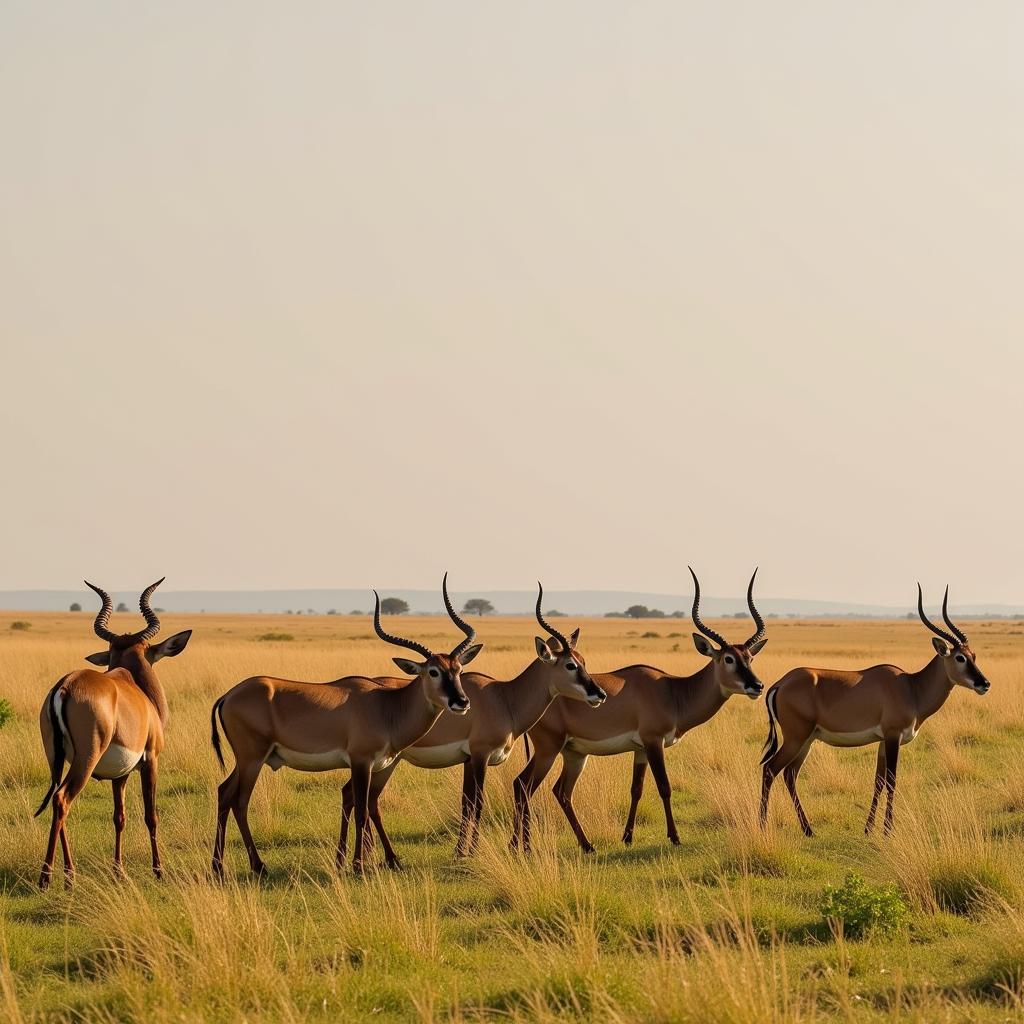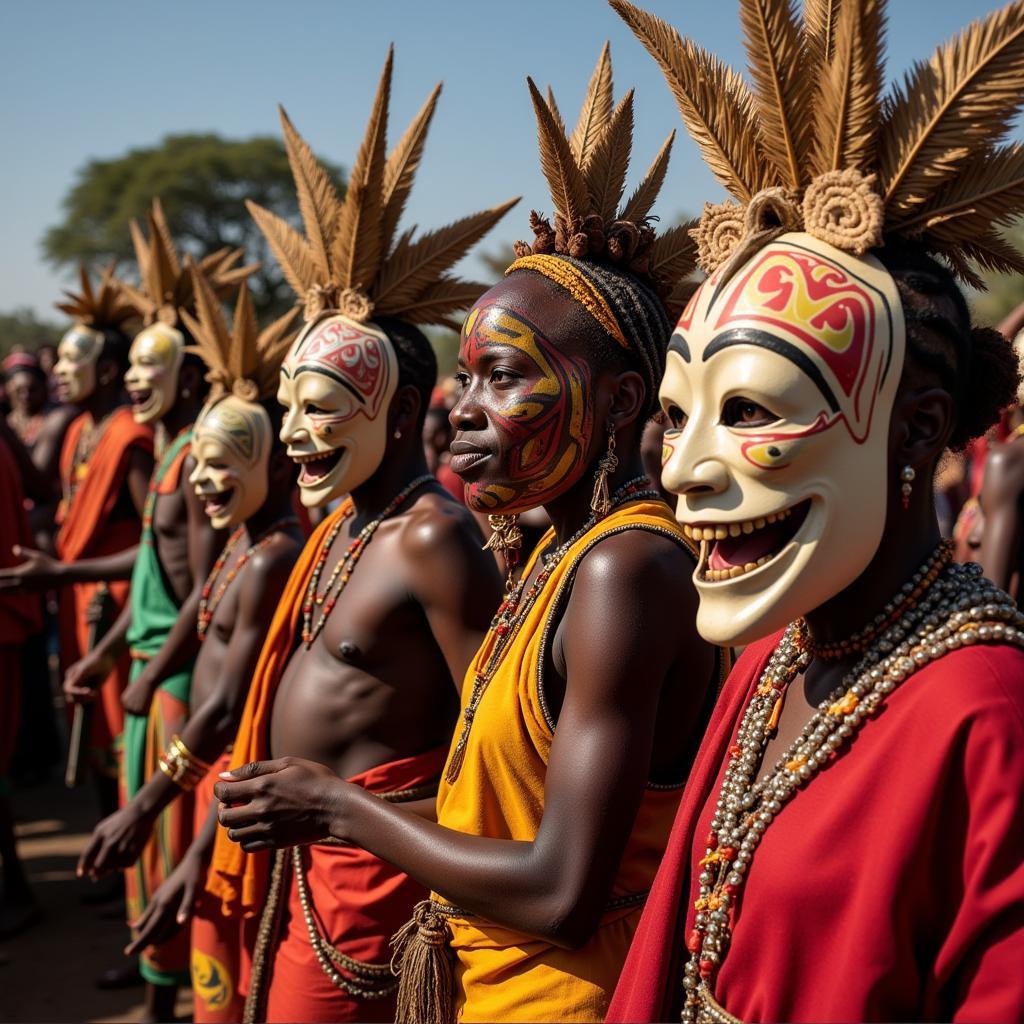Unraveling the Mystery: African Deer-Like Animals
Africa, a continent teeming with biodiversity, is home to a mesmerizing array of wildlife. While the term “African deer” might spark curiosity, it’s crucial to remember that true deer are not native to Africa. However, the continent boasts a diverse range of antelopes, many of which bear a striking resemblance to deer, captivating wildlife enthusiasts with their grace and elegance.
These deer-like animals, with their slender limbs, graceful movements, and often-impressive horns, occupy diverse habitats across Africa, from savannas and grasslands to woodlands and forests. Their adaptations to these varied environments, along with their unique physical characteristics and fascinating behaviors, make them a captivating subject of study and admiration.
Delving into the World of “African Deer”: Antelopes Explained
While not deer in the true zoological sense, these African antelope species often earn the moniker “deer” due to their similar physical attributes. Their lithe bodies, slender legs built for speed, and often-ornate horns evoke images of their distant deer relatives.
However, key differences set them apart. True deer, belonging to the Cervidae family, possess antlers – bony structures that are shed and regrown annually. Antelopes, on the other hand, belong to the Bovidae family and sport horns – permanent structures composed of a bony core covered in a sheath of keratin.
 Close-up of African Antelope Horns
Close-up of African Antelope Horns
A Closer Look: African Animals Resembling Deer
Let’s embark on a journey to meet some of these fascinating African animals often mistaken for deer:
-
Impala: With their slender bodies, reddish-brown coats, and distinctive black stripes, impalas are a common sight on the African savanna. Their remarkable leaping abilities, often clearing distances of over 10 meters, are a testament to their agility and grace.
-
Springbok: Known for their incredible jumping displays, springboks are masters of survival in arid regions. Their ability to leap high into the air, a behavior known as “pronking,” serves as a warning signal to others and confuses predators.
-
Klipspringer: These small antelopes are masters of navigating rocky terrain. Their specialized hooves provide exceptional grip, allowing them to effortlessly scale steep slopes and cliffs, earning them the nickname “African Chamois.”
-
Duiker: The name “duiker” originates from the Afrikaans word for “diver,” aptly describing their habit of diving for cover in vegetation when threatened. These small to medium-sized antelopes are known for their shy nature and solitary habits.
-
Dik-dik: Among the smallest antelopes, dik-diks captivate with their large eyes, pointed snouts, and delicate features. They are highly adapted to arid environments, obtaining most of their water from the vegetation they consume.
 Herd of African Antelopes on the Savanna
Herd of African Antelopes on the Savanna
Beyond Appearance: Ecology and Conservation of “African Deer”
These deer-like animals play a crucial role in their respective ecosystems. As herbivores, they contribute to seed dispersal and vegetation management, shaping the landscape around them.
However, many of these antelope species face threats such as habitat loss, poaching, and competition with livestock. Conservation efforts are crucial to ensuring the survival of these magnificent creatures and maintaining the delicate balance of Africa’s ecosystems.
Embracing the Diversity of African Wildlife
While the term “African deer” might be a misnomer, it reflects a natural curiosity and fascination with the continent’s diverse fauna. By understanding the unique characteristics and ecological significance of African antelopes, we gain a deeper appreciation for the intricate tapestry of life that thrives in this remarkable part of the world.
For more insights into African wildlife, explore our comprehensive African antelope guide and delve into the fascinating world of African game animals.
Frequently Asked Questions
1. Are there any true deer species in Africa?
No, true deer, belonging to the family Cervidae, are not native to Africa.
2. What is the main difference between deer and antelopes?
Deer possess antlers, which are shed and regrown annually, while antelopes have permanent horns.
3. Why are some African antelopes called “deer”?
Their physical resemblance to deer, with their slender builds and graceful movements, often leads to this association.
4. What are some threats faced by “African deer” or antelopes?
Habitat loss, poaching, and competition with livestock are major threats to many antelope species.
5. Why is it important to conserve these animals?
They play a vital role in maintaining the health and balance of African ecosystems, contributing to seed dispersal and vegetation management.
Looking for more information on other fascinating African animals? Check out our article on the enigmatic African desert song or discover the beauty of the African antelope with curved horns.
Need help planning your African safari adventure? Contact our team at +255768904061 or [email protected]. We’re available 24/7 to assist you in creating an unforgettable wildlife experience. Visit our office located at Mbarali DC Mawindi, Kangaga, Tanzania.

